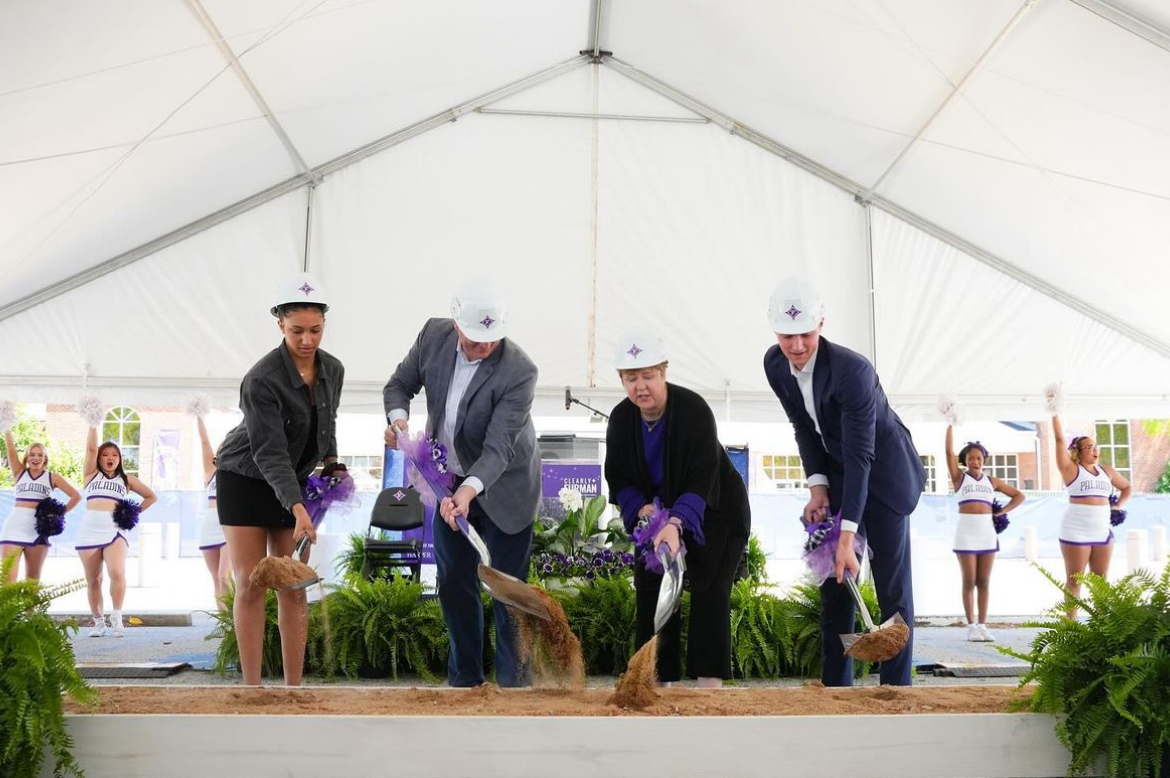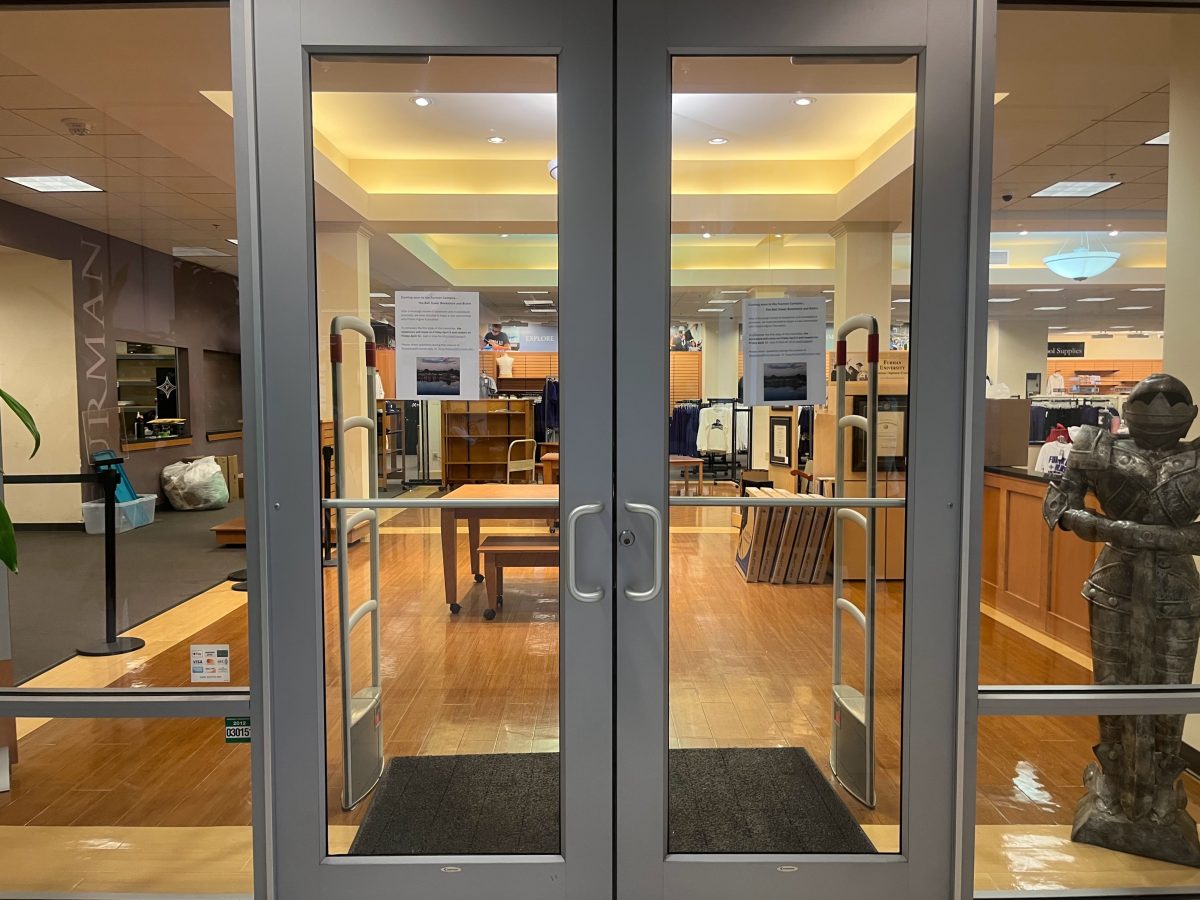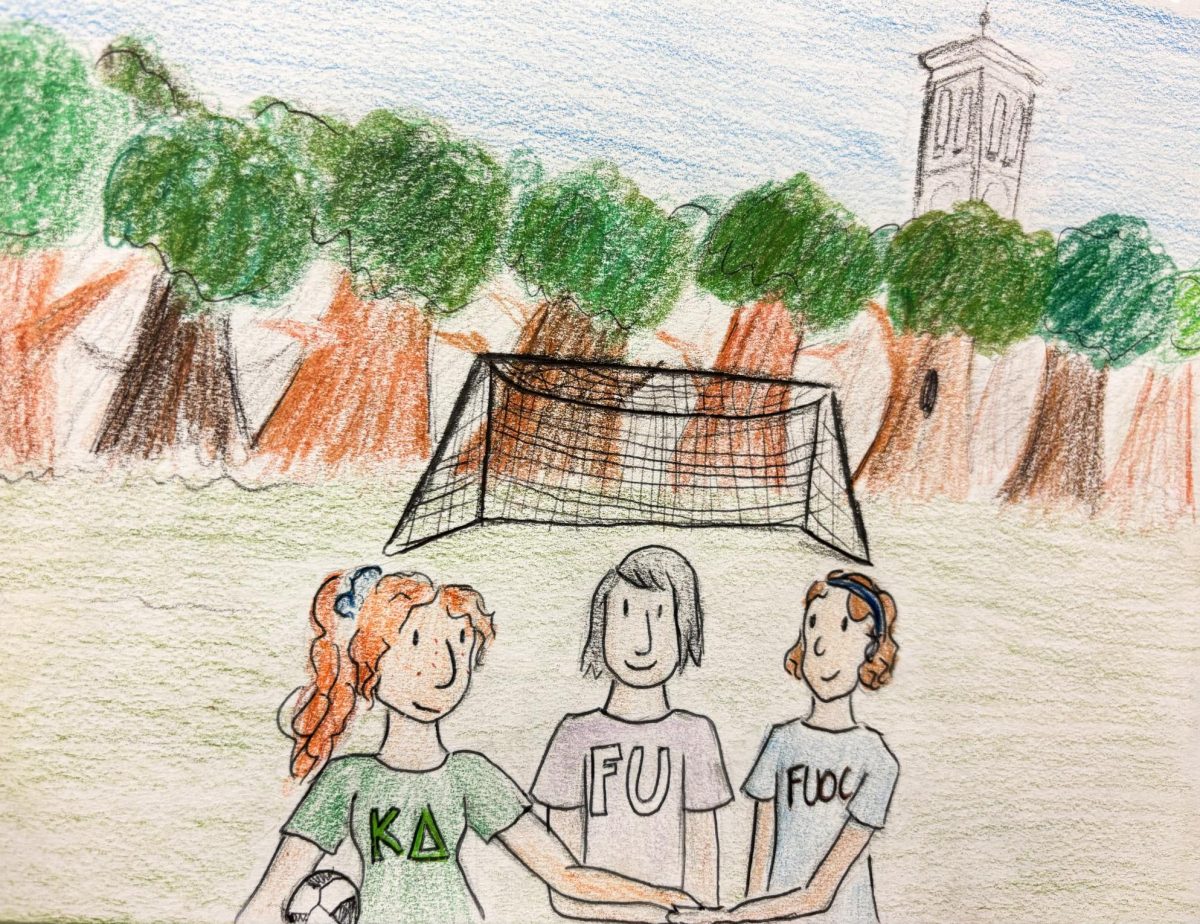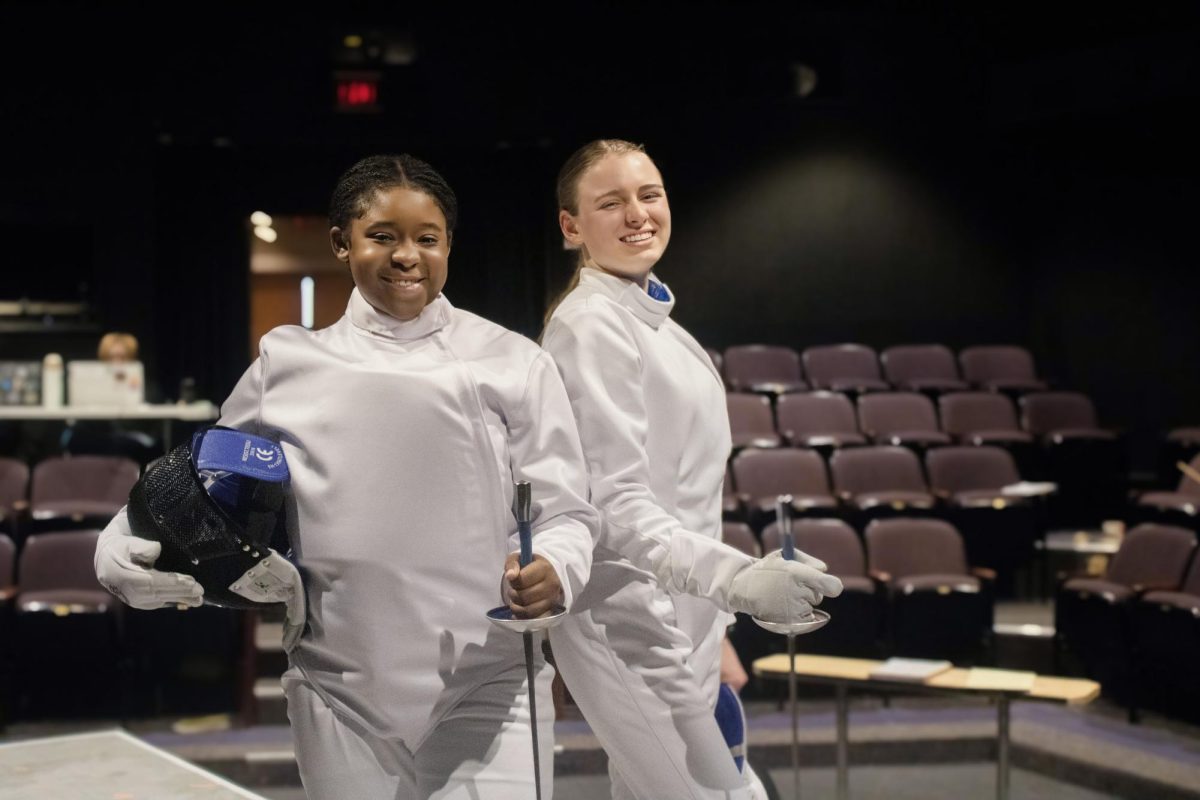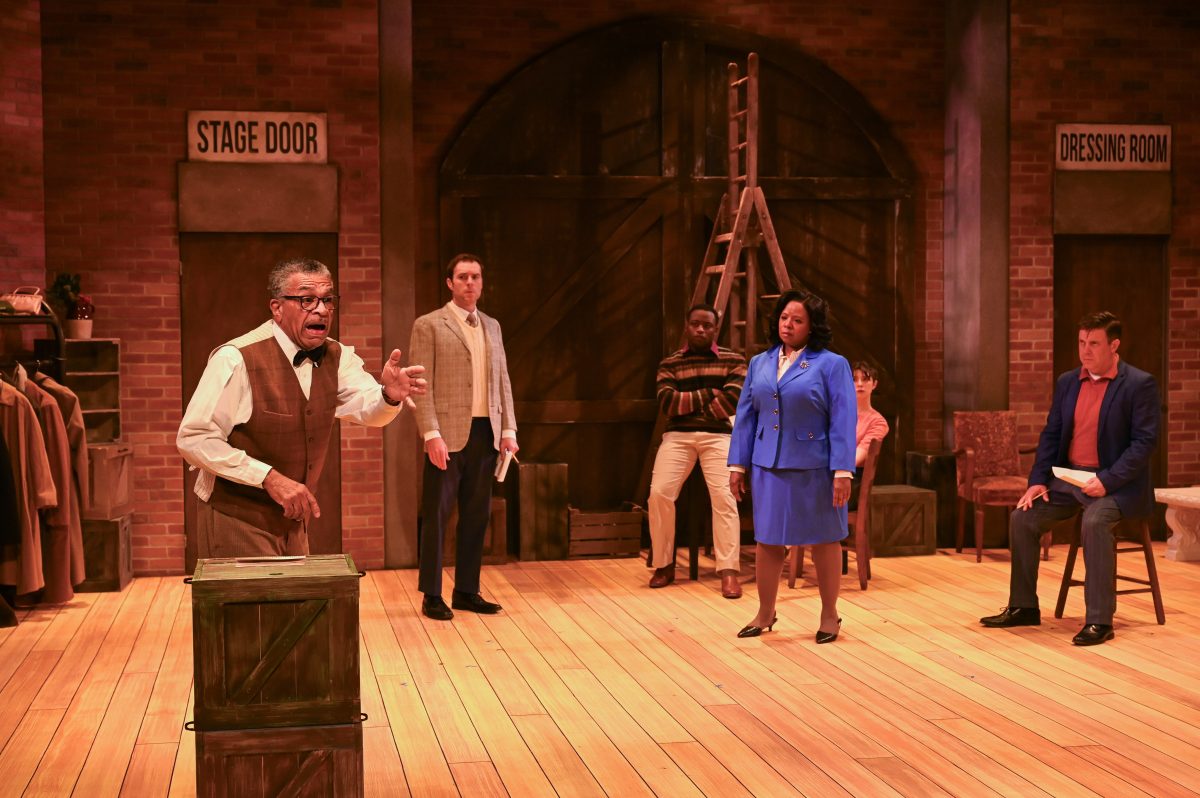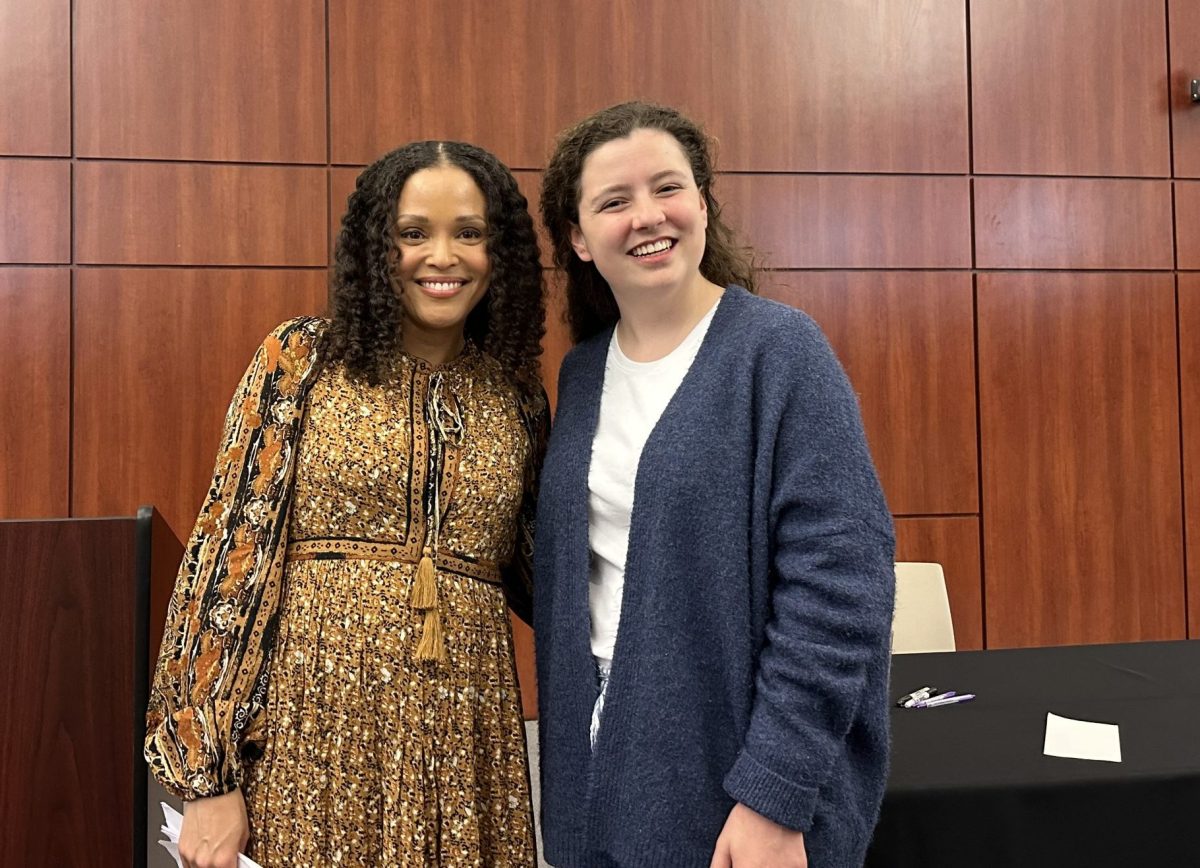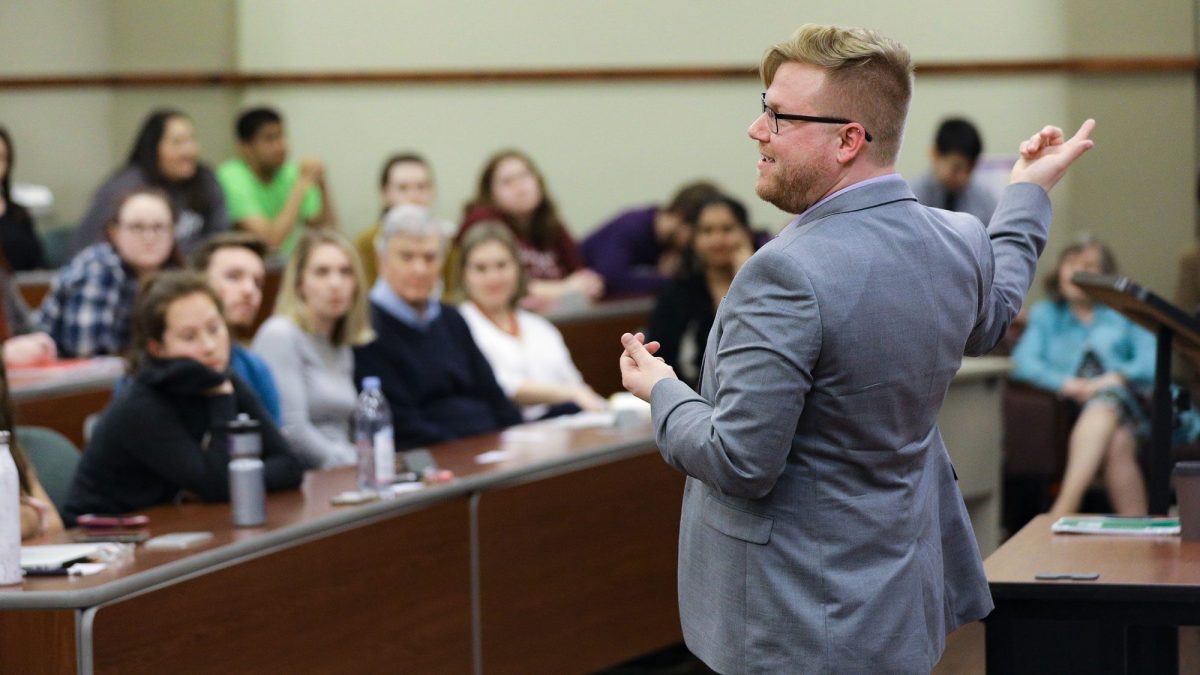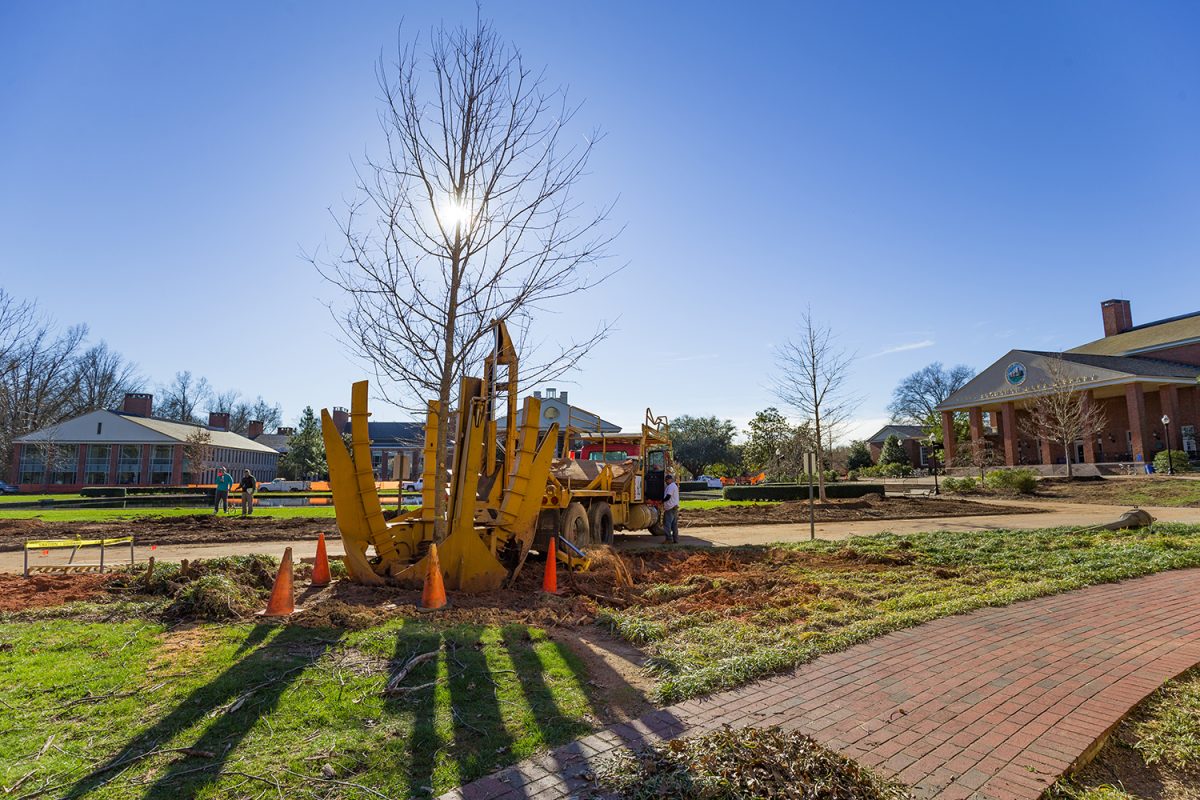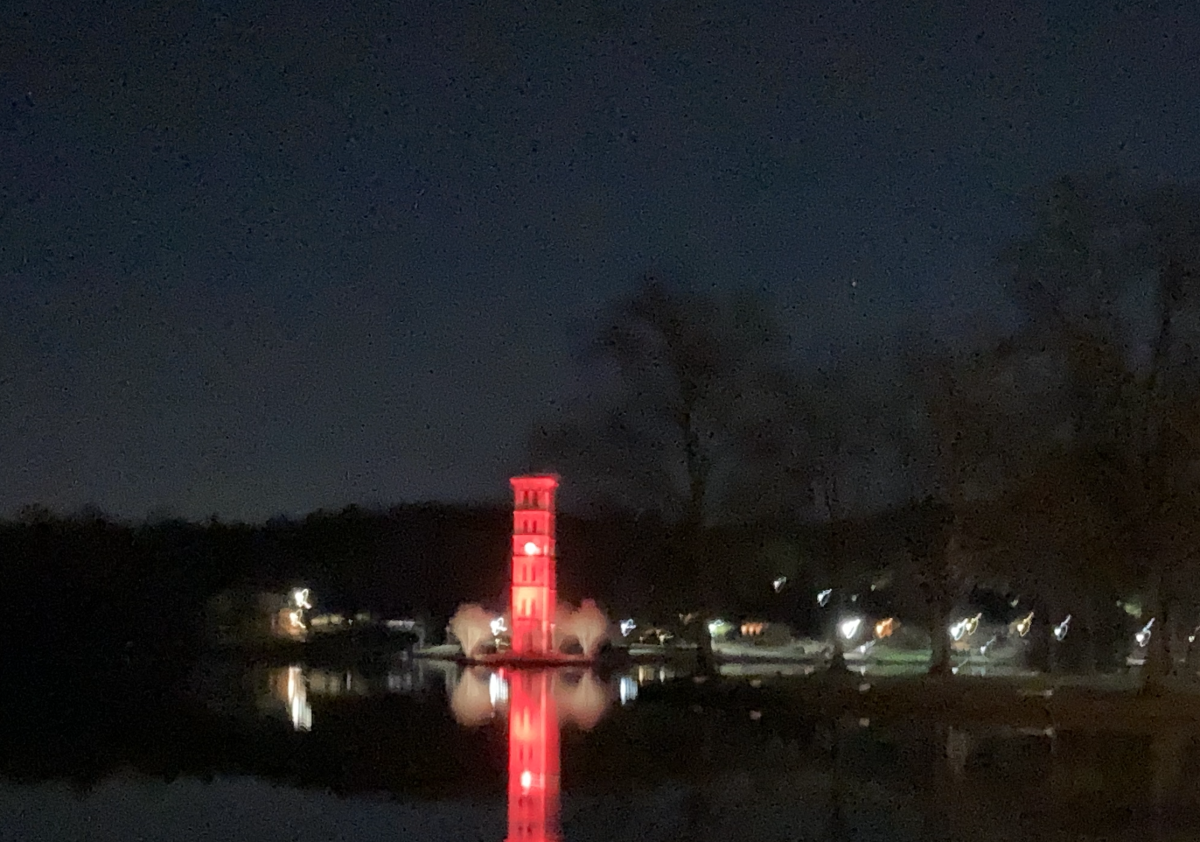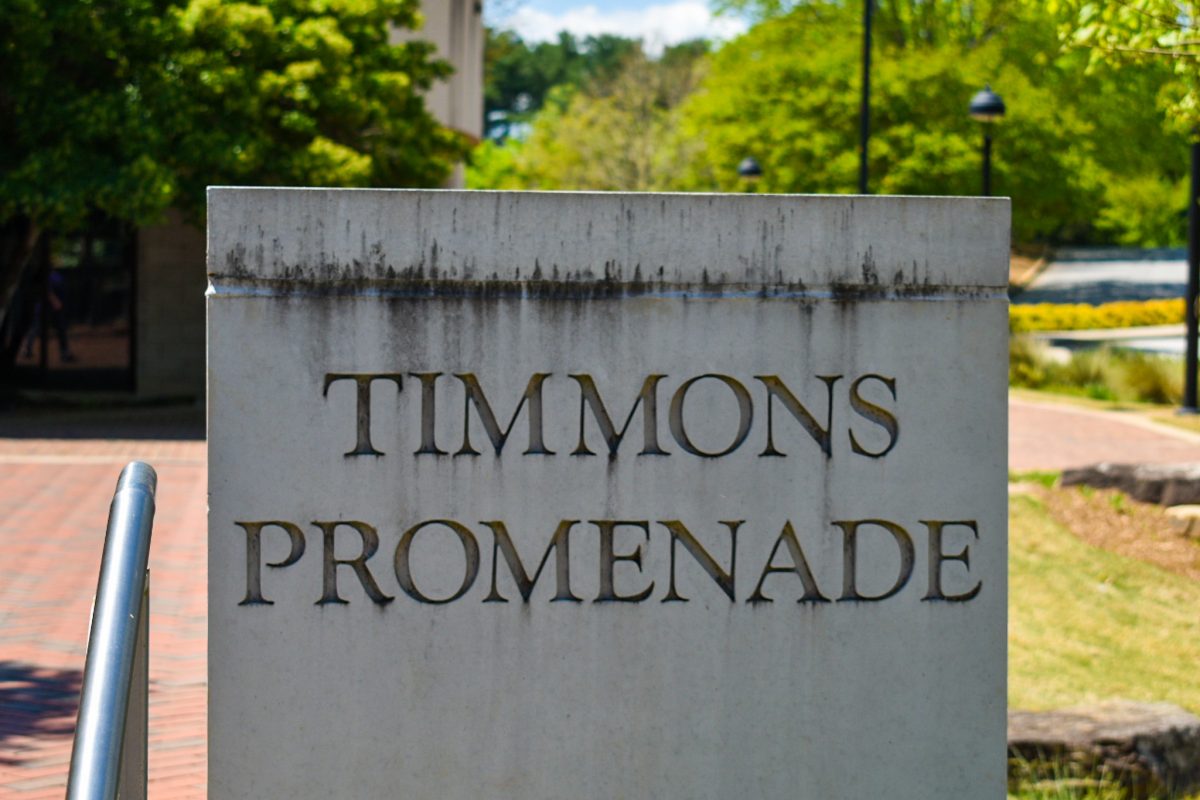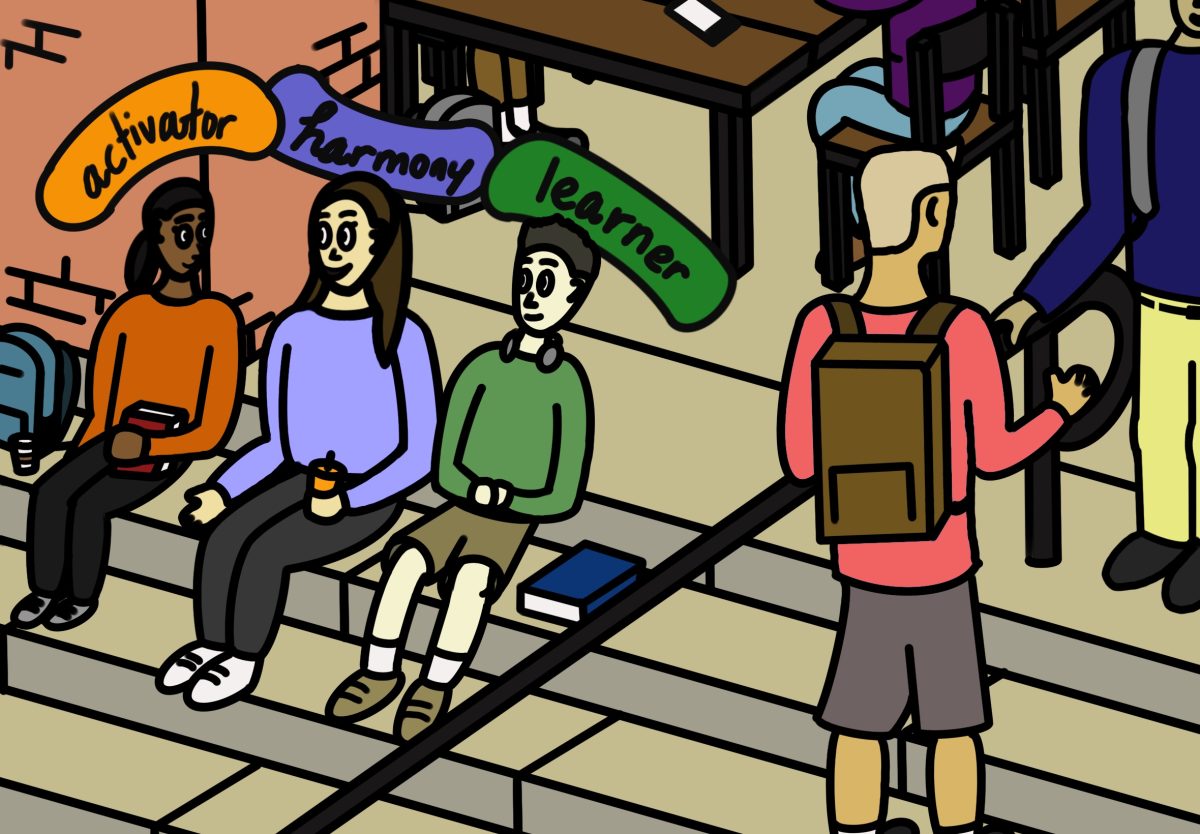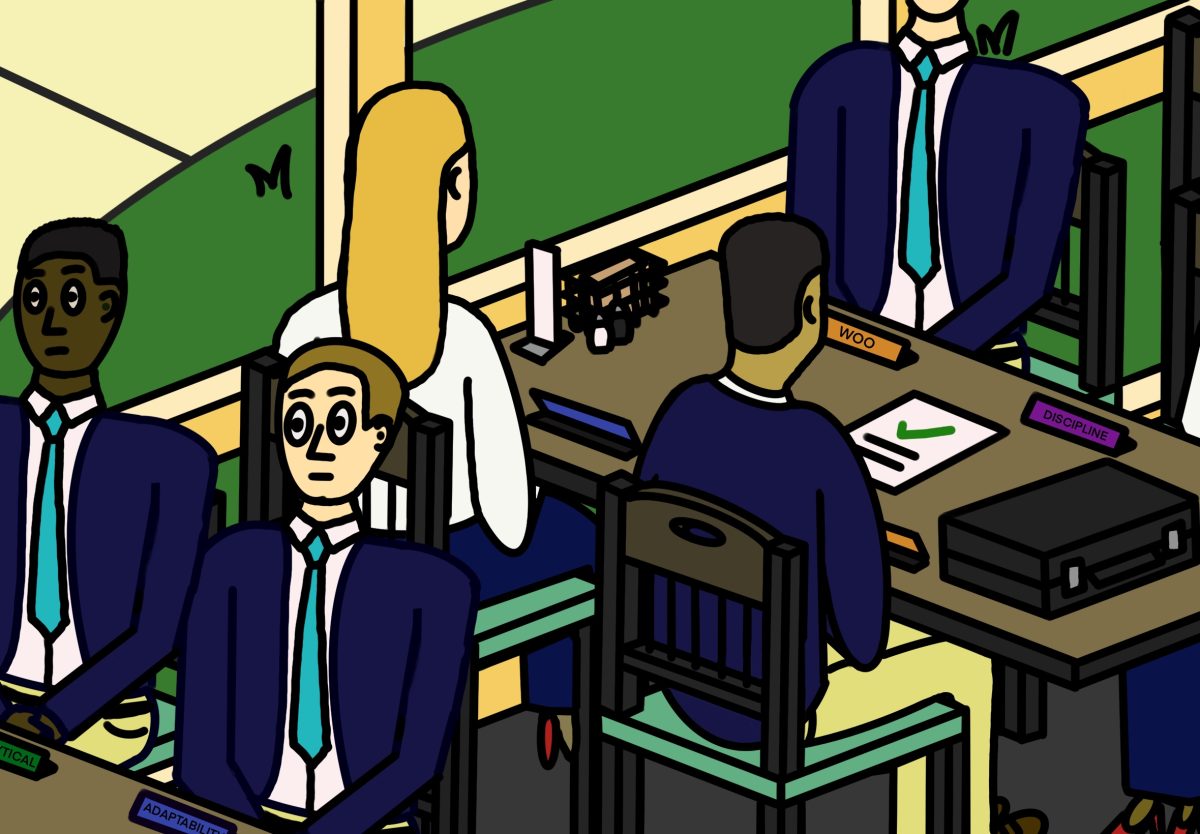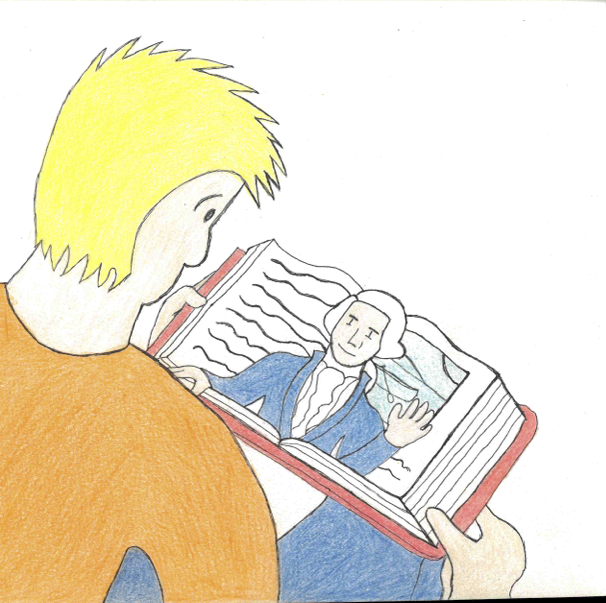If you’ve ever spent any amount of time wandering on Furman’s campus, then you’ve probably come across some sort of memorial installation — a bench, a tree, a pavilion. If you spend a little more time, look a little more closely, walk a little more on campus’ outskirts, you’ll probably find more of these that you’ve never noticed, that you had no idea existed, and that seem, in some respects, completely neglected.
I had one of these experiences in early January. During our low-to-no-contact phase at the beginning of the semester, when walks around campus were one of the few activities we could do outside the confines of our dorm, I stumbled across two small benches along a dirt path in the woods beyond the Bell Tower. Next to them was a plaque: “Morgan Meditation Garden.” The benches, spotted with lichen and dirt and rust, sat beside a small stream, so filled with mud and leaves that it barely flowed anymore, as uncontrolled ivy covered the ground and trees that surrounded them. Down the path, a second plaque, inscribed with a poem whose lettering was surrounded by peeling resin, rested alongside a third bench which was even more lichen-encrusted and dirt-covered.
This Morgan Meditation Garden peaked my intrigue. Reading the dedicatory line of the plaque — “In Memory Of Our Parents Frank Burt and Ethel Robinson Morgan, Jr.” — was the first time it really struck me that these memorial installations had a story behind them. Who were these people? Why is this garden here, in the depths of the woods? What is the story behind this mediation area and the dilapidated state it seemed to be in? The plaque contained some of that information: “Given by Martha Frances Morgan ’35 and Ethel Elizabeth Morgan ’37;” “Dedicated May 1, 2001.” But I wanted to know more.
Martha and Ethel Morgan were sisters. They were both graduates of Furman University and teachers in the Greenville County school system. Neither ever married or had children, instead dedicating themselves to their classrooms. In the early aughts, out of a love for their parents and of the Furman campus community, they donated funding for the establishment of the Morgan Meditation Garden. They had both been members of the Greenville Gardening Club for years, so it only seemed natural for their donation to go towards some sort of garden. A poem their father Frank had written, “Nature’s Shrine,” was installed at the beginning of the walk towards the garden, which opened in 2001. When Martha passed away in 2005, and when Ethel passed away in 2007, both included in their obituaries the pride that they held over the establishment of this garden — for Martha, even, it was the achievement she was “most proud” of.
The garden had its first fall into disrepair quite quickly after it was established. A geocache location at the garden, placed in 2001 shortly after the garden’s dedication, was marked as “temporarily disabled” for lack of maintenance and archived in 2004. By 2007, an organization called the Lilly Center was advertising that they would be hosting a cleanup and replanting of the garden. But since then, there has apparently been next to no discussion of it. A trail master plan regarding improvements and opportunities for development of the trails near Furman, which indicates it was last edited in 2009, makes brief mention of the garden as a potential reason people would be attracted to the trails. A web page which I ran across a month ago showed several photos of the garden in summer of 2017. A passing reference is made upon a list created by the special collections regarding nearly every place on campus. And that’s about it. The garden has been forgotten by the world, and its physical state reflects that disregard.
Since I discovered this garden in January, I’ve begun paying more attention to the memorials and honorific installations across campus. I have realized that the Morgan Memorial Garden is not the only installation that appears to have been neglected by Furman. Behind the chapel, a water-stained statue of St. Francis of Assisi sits atop a fountain that is still and dry, in memory of former Professor of Religion Theron Price, who died in 1995. The Class of 1964 Garden beside the Cherrydale House consists of three wooden benches with paint that is quite sparse and a waterless birdbath with piping stuffed with dirt and pine straw. Benches across campus are in similar states, with plaques rusting, paint chipping, chunks missing. Art installations like “Refugium” outside of Younts or “Inspiration” in front of Gambrell have similar problems, with rust peeking out behind peeling paint and algae and watermarks springing from the seams. Even the prominent white stone slabs demarcating Timmons Promenade appear forgotten about, streaked with dirt and grime, not upkept as often as they ought to be.
Furman advertises in their “Benches and Branches” program that donations for honorifics and memorials cover the “cost of purchasing, planting and maintaining” those installations, “link[ing] the honoree’s name with [the] legacy of grace and beauty” preserved in them. But it seems that Furman is not fully upholding its end of the bargain; the “grace and beauty” seem to have long departed from some of the many installations which have been gifted to Furman, and are quickly leaving many others, with nary a reaction.
On Friday, Furman unveiled its newest memorial, a statue and plaza dedicated to the memory of Joseph Vaughn — a fitting and beautiful tribute to a groundbreaking student. But the installation of this statue is not the end of Furman’s work to honor Vaughn or promote diversity and inclusion at Furman. It is only the beginning of this process, a sign of Furman’s commitment to these goals. The same is true of all the honorifics on campus: their installation should be the beginning of Furman’s work to show homage to these members of the community, not the end.
Would the Vaughn Plaza be as meaningful if the carved letterings become as streaked with dirt as the markers at Timmons Promenade, or if the statue was as water-stained and rust-covered and moss-coated as the sculptures at Younts or Gambrell? Certainly not. So what does it communicate when installations for people that Furman purports to honor are left in states of disrepair? Can we truly claim to honor those whose memorials we forget to tend? And if we are not choosing to honor and remember them, if we are only paying platitudes to the philanthropy of those who loved this community enough to donate a gift in someone’s honor, why link a decaying and forgotten bench to their name?
Furman’s honorific installations should bring life and love and beauty to campus through the memory of those whose names are inscribed upon them — but without our attention, our upkeep, and our care, why do their plaques matter at all?

